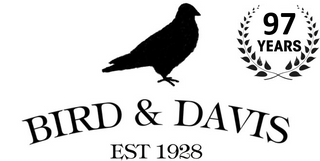There is no doubt about the importance and cultural significance of oil painting in not only the art world, but across the global landscape. In fact, it could be argued that the great majority of paintings which make up the very fabric of art history were painted using oil paints. In this blog, we outline the rich and fascinating history of oil painting, and how this unique style of painting took hold of the world as we follow its journey from ancient times to the modern day.
The dawn of oil painting…
Oil paints have been used for centuries and are favoured by many artists due to their versatility (in terms of painting surfaces), colour depth, and consistency of the paint which allows the painter to cover mistakes once the paint dries. In its essence, oil paint is a mixture of powdered pigment and oil (usually a drying oil such as linseed). Oil paintings date back to around the 7th century CE, and have been developed profusely throughout the years.

Near Glarus, Switzerland, 1781 by John Warwick Smith
The first oil paintings recorded were murals painted by Buddhists in the 7th century CE. The Buddhists would use an early form of oil paint to paint on the walls of caves in Bamiyan, Afghanistan. They tended to use oil that was supposedly extracted from accessible items like poppies and walnuts. In recent years, shields and other weaponry decorated in oil paint have been discovered from around the same time.
In Europe however, the earliest recorded oil paintings dated back to around the 11th century, when most paintings were performed on wood, which lead the paint to inevitably crack. Painting on wood was also extremely time-consuming in terms of preparation, as well as this, the colour produced was far less intense.
Early Renaissance art
Consequently, oil paintings did not gain traction until the 15th century when Jan van Eyck developed the original ideas of oil paint and was the face of early Renaissance art. During the Renaissance period, there was a sort of cultural “rebirth” amongst European countries in which they embarked on a journey to relearn classical philosophy. This changed every aspect of modern civilisation, particularly art and literature. This time period brought attention to the need for an alternative painting medium to egg-yolk tempera, which was of use at the time. Artists recognised that oil paint produced a higher colour saturation and opacity and also gave them the ability to add greater depths to paintings
By the mid-15th century, early Netherlandish painters such as Van Eyck rose to huge popularity, influencing many other Italian and Northern European artists with his paintings which were underpainted with the original egg tempera and finished with layers of oil paints. Alongside Van Eyck, Hieronymus Bosch was also one of the pioneers in oil painting - helping to bring to light one of the qualities that are still treasured today - its slowing drying abilities. This feature allows for more control when it comes to painting applications. Plus, slow drying allowed for paints to blend more subtly than any other paints in this era.
This technique became increasingly sought after, with many artists travelling to paint commissions for society’s wealthy. Oil painting of portraits, important figures and religious iconography became hugely popular within this era and it became the most established form of painting in Europe.
Artists were in awe at the depths created, and thus began the beloved era of oil paintings, which would remain a focus for centuries to come.

The Blind Leading the Blind. Created by David Teniers the Younger. Circa 1655.
Oil painting in the Renaissance period
By the 16th century, oils were the most commonly used painting medium of the time with artists like Da Vinci creating masterpieces which hold extreme value in today's contemporary society. In fact, His Last Supper (1495-98) and Mona Lisa (15-03) are some of the most iconic and influential paintings within the Renaissance period, and their impact is still just as powerful today. As well as oils being introduced in this period, a new linen canvas was introduced as a deterrent from the wooden panels which allowed the art created to be far looser in style. Titan was one particularly famous artist from the time, whose art specifically exhibits this change in composition and style.
The versatility of oils creates countless techniques for artists to explore while expressing thoughts, feelings, dreams, and emotions through their artwork. Oils in some sense have created a new way for artists to think and see the world, which is made apparent through Picasso's Mandolin and Guitar piece where sand is used to create extra texture on the canvas.
Oil Painting In The Modern Day
In the 21st century society today, oil is still the prime painting medium despite other paints like acrylic painting being faster drying. With its unique properties, it is still adored by both European artists as well as being globally loved.
With technology on a rapid rise, there is now also a huge range of oil paint features available for those creating digital art, allowing this Italian Renaissance style to live on in the digital world.
Would you like to learn more about oil painting? Whether you are just starting your journey, an amateur or just want to learn about the practicalities of oil painting - be sure to check out our informative blog Oil Painting For Beginners - discussing all the essentials you need to set yourself up to enjoy the magic of oil painting!

